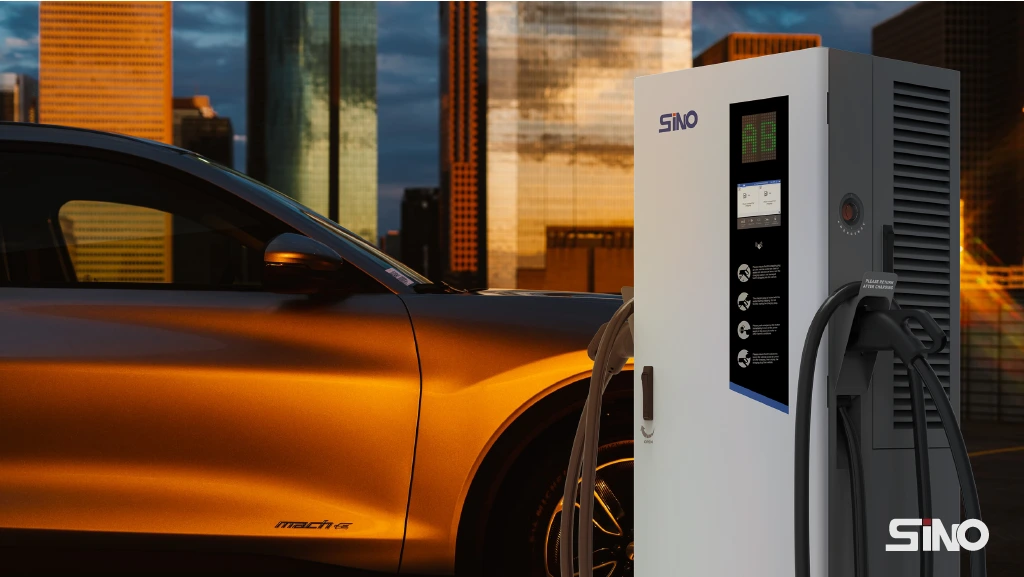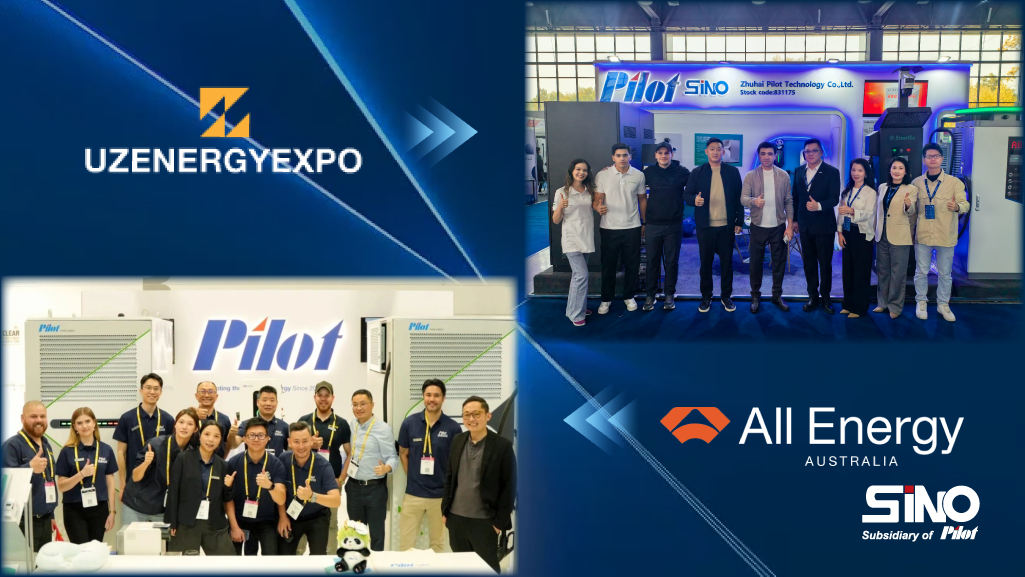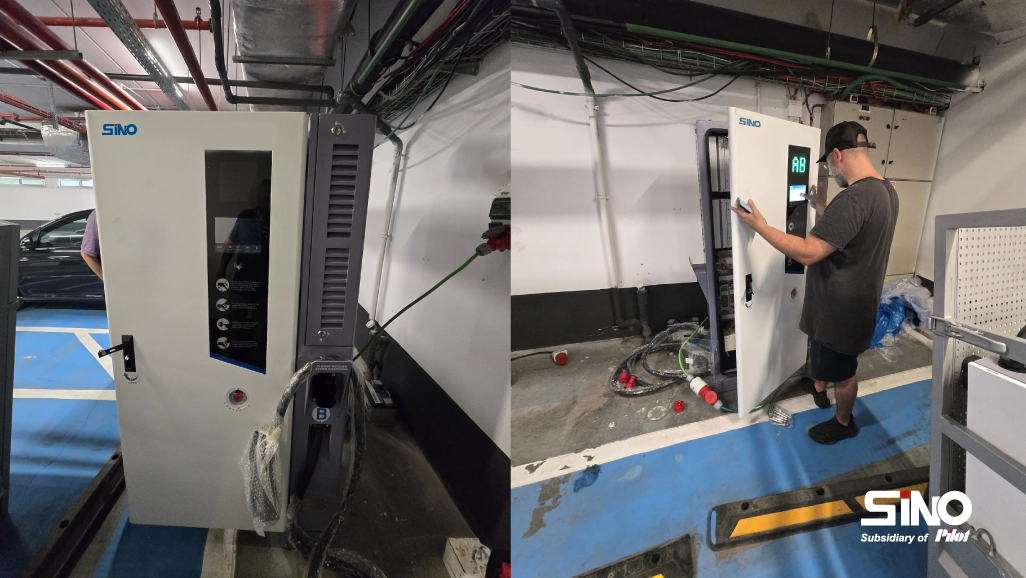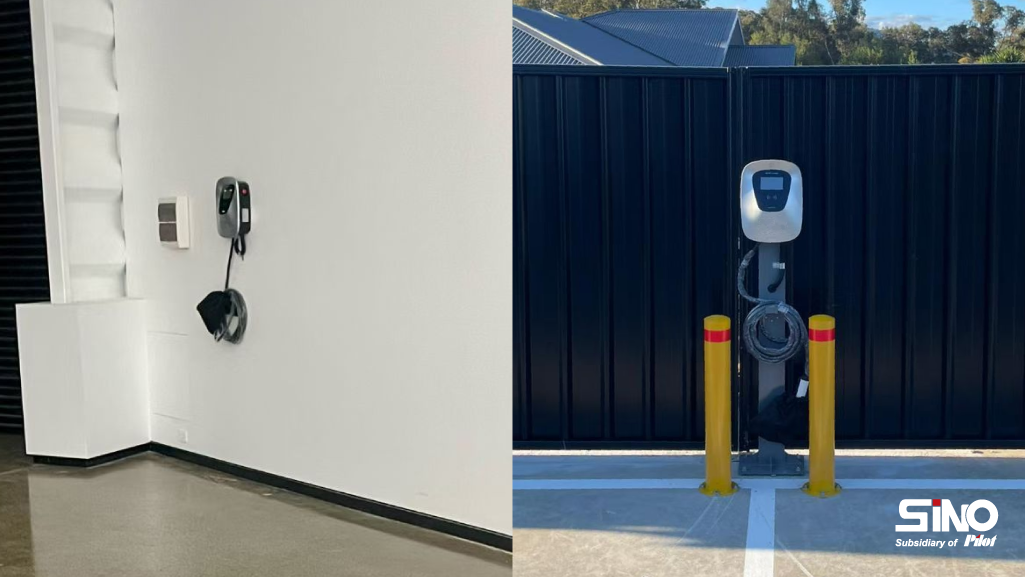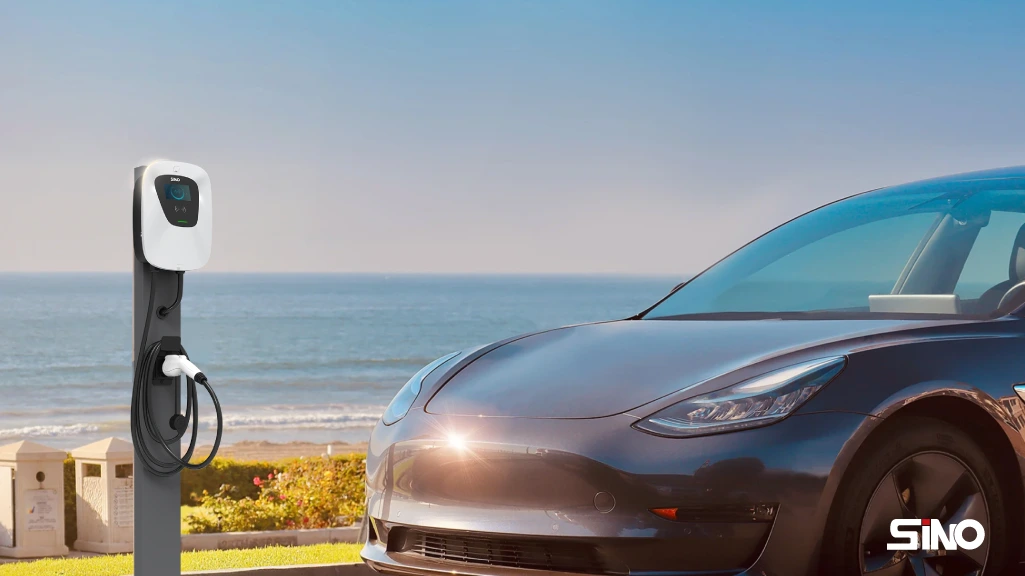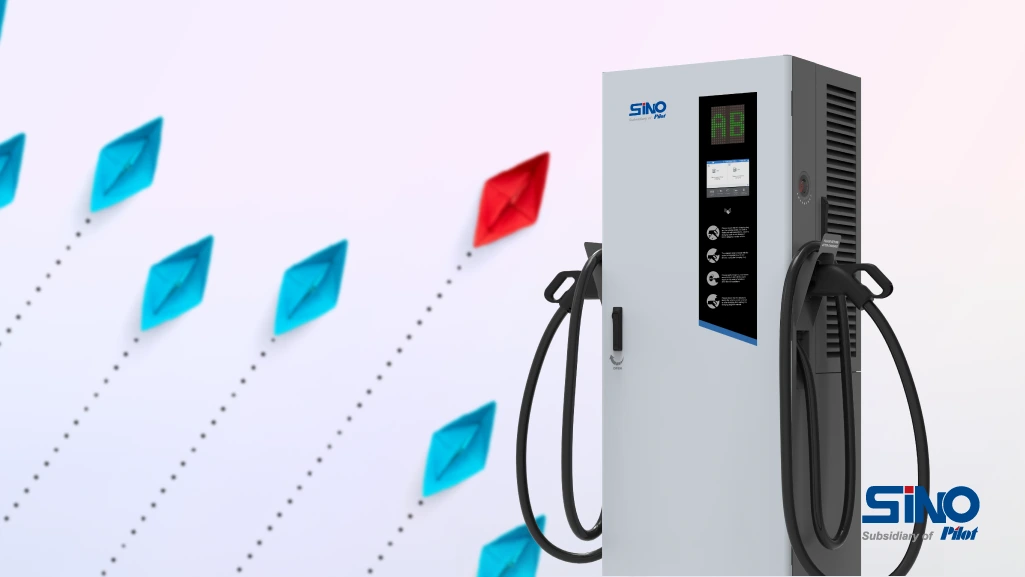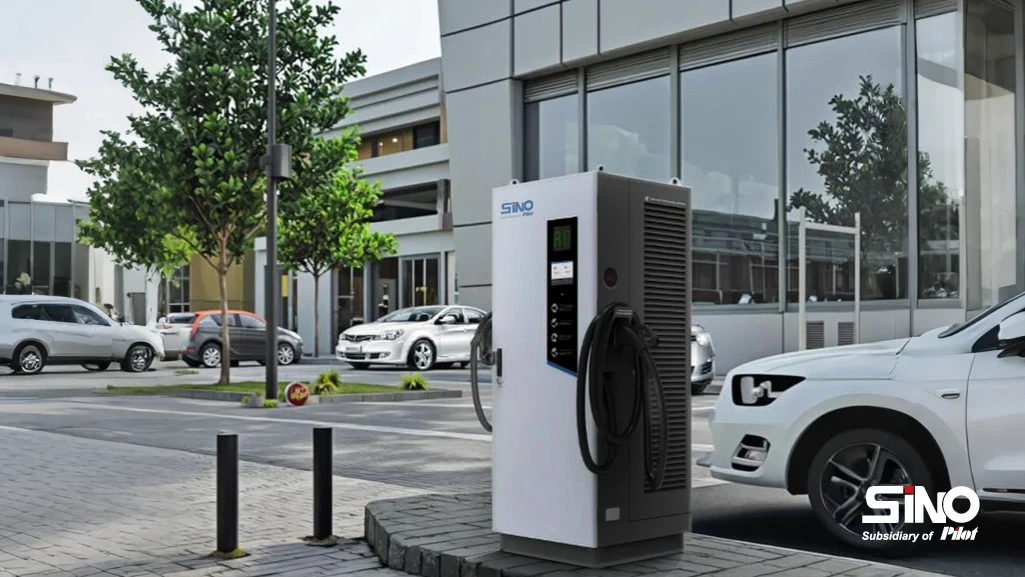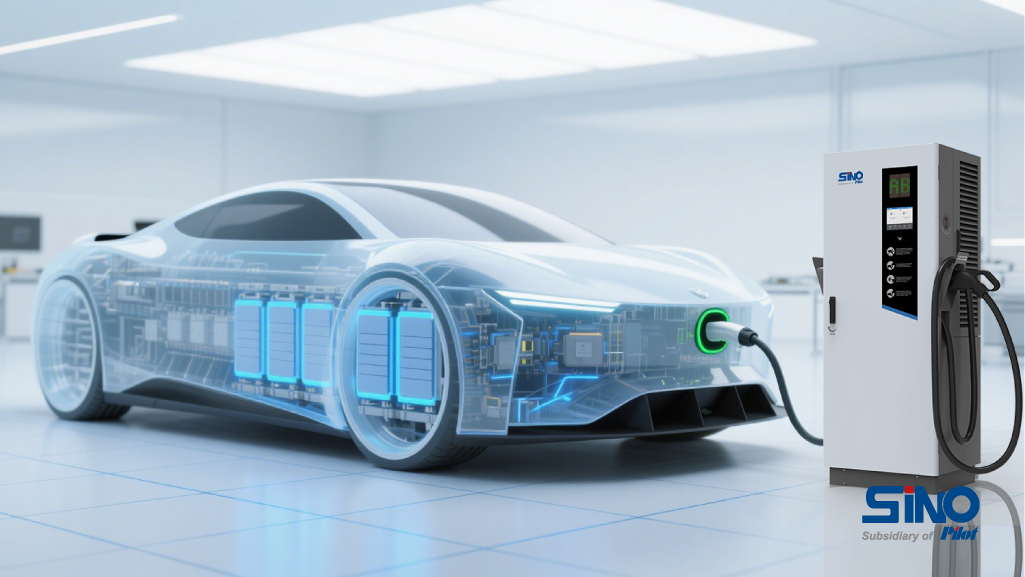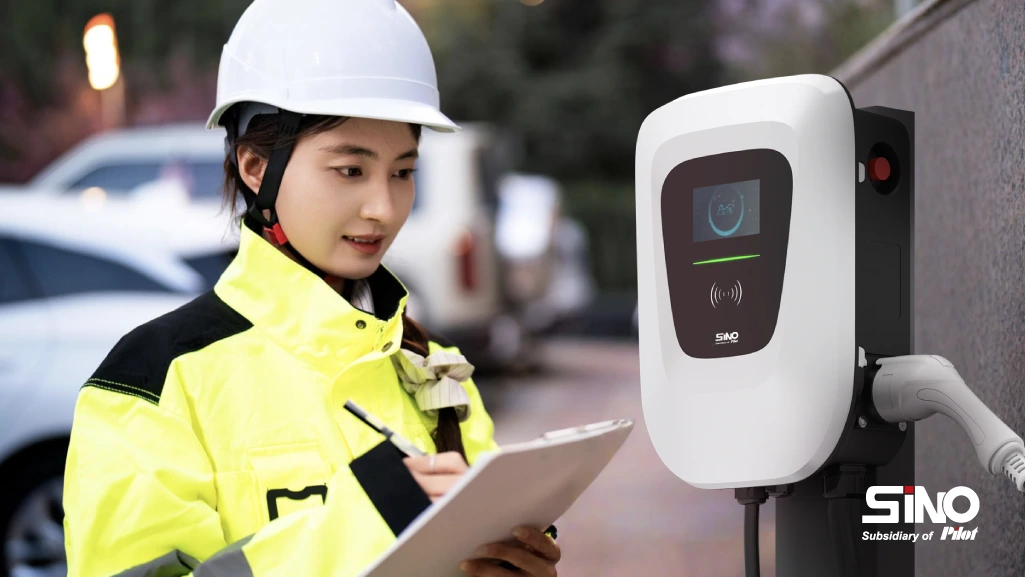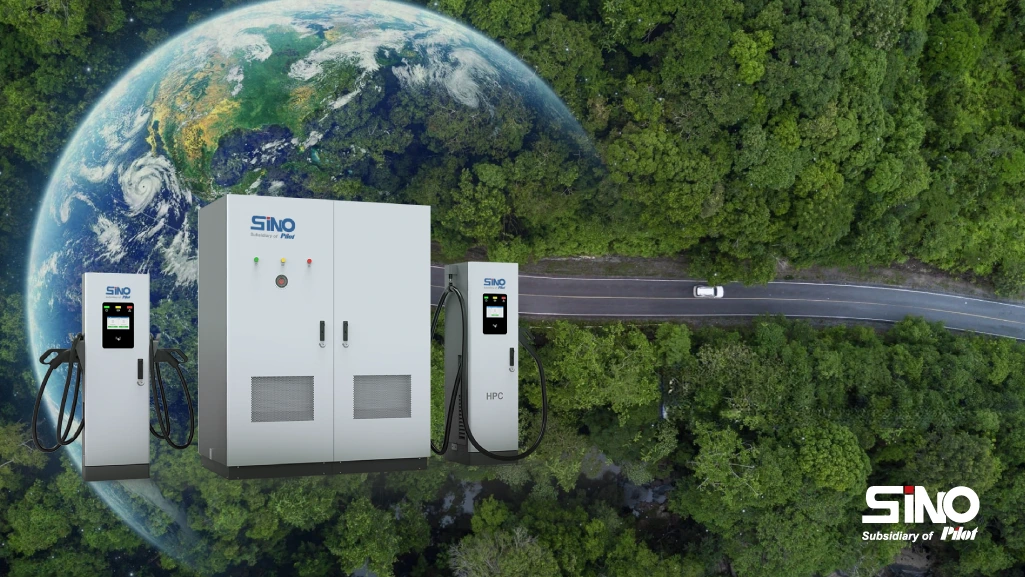Electric vehicles have become one of the most cost-effective and environmentally friendly purchases in recent years as a result of rising fuel prices and various government incentives. As one of the most important supply equipment for EVs, people may begin to comprehend how those charging stations work.
What Are the Charging Stations?
Charging stations are setups that provide electricity for charging electric vehicles. The charger draws electrical current from the grid and delivers it to the vehicle’s battery.
Different Types of EV Charging Stations
Level 1 may come with your car as a present or an incentive from car sellers and there will be no upfront costs for installing it. It is portable and as long as you have a standard outlet close to where you park your car, you can plug in directly. Level 1 is the slowest.
Level 2 chargers are usually AC chargers and are much faster and more expensive than level 1. You may need to hire an electrician to do some electric work if you are not capable of this. That usually means new wiring, updating the grid, and receiving the necessary permits and then there will be a new circuit on your electrical panel. Level 2 can be installed by an EV owner in his private garage or a parking space. It can also be found in a public place that is invested by entrepreneurs.
Level 3 are DC fast charging stations or Supercharge which are the fastest among these levels and the most expensive. And most homes don’t have the electrical supply you need (480 volts, 400 amps), and utility companies can’t easily add it to a home in a residential neighborhood. These are less common and usually are only used in industrial or commercial settings like along highways, or near major shopping centers. Most DC fast chargers can increase your vehicle’s range by up to 100 miles less than half an hour.
Step-by-step Process of Operating Public EV Charging Stations
Level 1 or having a home charging station of your own, especially Level 2, is the most practical and convenient way to keep your battery topped up. Yet, if you drive an electric car long enough, there is a high chance you’ve encountered public charging stations. We’ll mainly take a look into how you can use the public charging station.
Get the Cable and Plug and Check the Connector Types for Your Electric Car
It is not as challenging as it may seem. Once you have parked at a public charging station, the first step is to look for the charging cable. The cable is usually built-in and attached to the charger itself. You need to understand what type of connector your car has to ensure that the charging station you choose can accommodate your vehicle’s outlet.
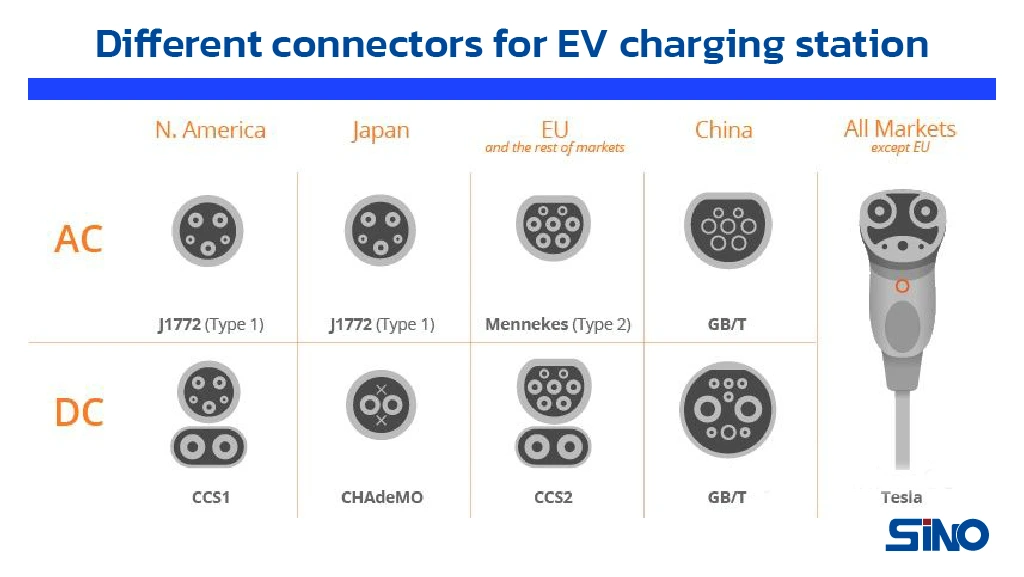
(1) SAE J1772 CONNECTOR -TYPE1
The SAE J1772 connector, also known as a J-Plug or Type 1 connector, is a charging standard used primarily in North America and Japan. The J1772 EV connector supports single-phase AC charging for Level 1 and Level 2 EV chargers. The absence of a built-in automatic locking system is the only drawback of a J-plug.
Almost every North American electric car or plug-in hybrid will have a Type 1 plug on their vehicle except for Tesla, which has its own proprietary charging standard. However, they provide a compatible adapter allowing Tesla drivers to charge using a J1772 charger.
(2) Type 2
The Type 2 connector, also known as the Mennekes connector, is a charging standard used primarily in Europe with a feature of seven pins. The type 2 connector supports single-phase and three-phase Ac charging for Level 2 chargers. The plugs have openings on the side that allows them to lock into place automatically when connected to the EV for charging. The automatic locking between the plug and the EV prevents the charging cable from being removed during charging.
(3) CCS
The combined charging system, or CCS for short, is a type 2 plug solution for quick DC charging. It has two additional pins at the bottom that speed up charging, two pins for communication, and an earth conductor in the upper half that serves as a reference for the protective system. However, it is not compatible with CHAdeMO, thus, you must use an adapter to utilize both together.
- CCS1 combines the J1722 Type 1 plug with two high-speed Dc fast charging pins. CCS1 is the DC fast charging standard for North America.
- CCS2, Like the CCS1 which combined an Ac plug with two high-speed charging pins, the CCS2 combines the Mennekes Type 2 plug with two additional high-speed charging pins. It is the primary DC fast charging standard used in Europe.
Unlike in North America, Tesla 3 and Y owners in Europe can charge their vehicles with a CCS Type 2 charging station, and Tesla S and X owners can use an adapter.
(4) CHAdeMO
The CHAdeMO connector is a DC fast-charging standard initially developed by Japanese automakers and released before CCS. It features bidirectional charging and is the preferred standard for DC fast charging in Japan. Even so, Japanese auto manufacturers are adapting models to CCS connectors for North American and European markets.
(5) GB/T CONNECTORS
In China, there are only two types of EV connectors used. Both are named GB/T. One is for AC-type charging, and the other is for DC-type charging. The GB/T AC connector resembles the appearance of the Mennekes plug used in Europe. However, the cable configuration inside the connector is in a different order, so they are incompatible. The GB/T DC connector is the only DC fast charging protocol currently used in China.
All EV charging connectors have built-in safety features to protect against overcurrent, ground faults, overvoltage, and high temperatures. These safety features protect the vehicle and the charging station, preventing electrical hazards. When using an EV charging station, it’s vital to make sure you follow all safety guidelines and use the correct charging connector for your vehicle.
Download an App
Download an app will make using charging stations easier for you or enable you to operate a charging station to save you both time and money. Using an app will require you to register and create a separate payment account. With an app, you can have an overview of payment compatibility across networks, real-time charging station availability, Charging station levels, Available connector types and more.
Start Charging Your EV
After plugging the appropriate connector into the charge port, you can initiate your charge by tapping the app screen or use the charger’s program card or your own credit card following by the instructions on the charger screen. Once the charger is activated, its screen will show that the charger is in use.
Pay for the Charging and Go
When your EV has reached the desired level of charge, it’s time to end the charging session. Since you are ready to hit the road, you can pay for the use of charging stations in a variety of ways. Some of them accept payment with credit cards, while others might need a special access device.
Push the button forward to release the connector and replace the connector in its holster.
Your EV is now charged and ready to go!
Our social:
Facebook: www.facebook.com/sinoevc
Instagram: www.instagram.com/sinoevc
Linkedin: www.linkedin.com/company/sinoevse
Youtube: www.youtube.com/@sinoevc
Twitter: www.twitter.com/sinoevc

“Better Charging for Better Life”
—ZHUHAI SINO ENERGY TECHNOLOGY CO., LTD.



